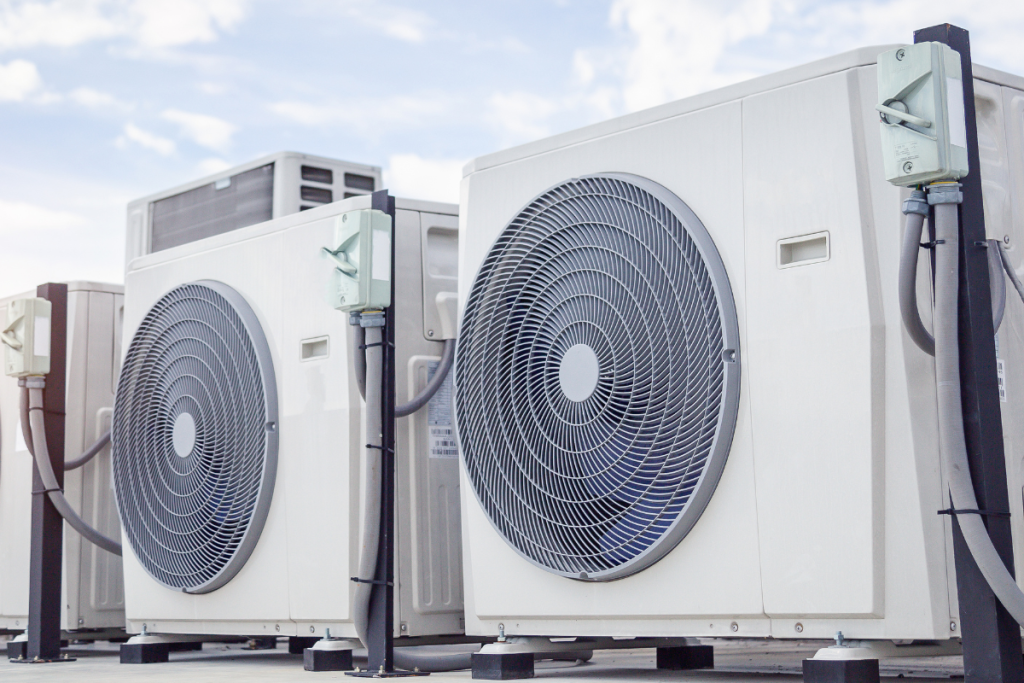Rising humidity levels are a genuine concern for commercial property managers. When the mercury starts to climb and the air gets thick with moisture, commercial HVAC systems can become overwhelmed trying to cool the space down, leading to premature component wear and high energy bills.
High humidity can also cause condensation buildup in your system, potentially leading to mold growth that can pose a health hazard to your tenants, employees, and site visitors. Fortunately, a well-designed and maintained commercial HVAC system is equipped to help you combat indoor humidity to maximize occupant comfort, keep your energy costs low, and ensure the operational efficiency of your equipment.
How Do Commercial HVAC Systems Control Building Humidity?
In climates that tend to experience excessive humidity levels, like here in Southern Ontario, HVAC systems are specifically geared to heat and cool the air and help control internal moisture levels while doing so.
Commercial HVAC systems control humidity by extracting moisture from the air during the cooling process. The evaporator coil within the system condenses the water vapor, transforming it into a liquid that is then drained away. This process helps your building maintain an optimal indoor humidity level, usually between 30 and 50 percent.
The Role Of Energy Recovery Ventilators (ERVs) In Humidity Control
ERVs are units that support your HVAC’s efforts to manage humidity levels in your buildings by allowing for energy-efficient controlled ventilation of the interior space. This provides moist air during the dry winter and drier air throughout the humid summer.
For example, ERVs use the vented inside air during the warmer months to cool the warmer incoming air. They accomplish this by transferring sensible heat (the heat content of the air itself) and latent heat (the amount of energy required to evaporate water into vapor) to remove moisture from the incoming air.
In cases where latent heat sources are more than the HVAC system was initially designed to handle, ERVs help keep the air cool and dry while preventing your other parts and components from becoming overly taxed, mitigating the risk of system failure.
ERVs work in opposite fashion during winter, adding moisture to the incoming air to prevent the indoor space from becoming too dry.
Read More: What Is The Difference Between An HRV and An ERV Unit?
Other essential benefits offered by ERVs include:
-
Reduced Energy Consumption For Humidity Control
Since ERVs bring in cooler, drier air, less energy will be required for indoor climate control. Even with the additional power necessary to operate ERVs efficiently, you will still see net energy savings overall.
-
Optimized Indoor Air Quality
Using ERVs helps increase indoor air quality by allowing you to increase air intake due to the reduced energy required to recondition incoming outdoor air.
-
Reduced Demand During Peak Periods
ERVs allow you to reduce the amount of air your HVAC system needs to cool, even during the times of day when your system uses the most energy and when energy rates are most expensive, reducing your energy bills even more.
-
Removes Reliance On Other Appliances
Some companies use appliances such as humidifiers and dehumidifiers to help control humidity levels in their buildings. ERVs can help you avoid the costs of purchasing, installing, and operating these units by efficiently managing your incoming air.
How An HVAC Preventative Maintenance Program Can Help With Humidity Control
Signing up for a Preventative Maintenance Program is also a smart move to properly manage humidity in your commercial properties. These maintenance inspections, carried out two or three times yearly, include cleaning and inspecting cooling coils, testing system control operations, checking for leakage around the air handling unit, and inspecting and cleaning or replacing filters as necessary.
Springbank’s HVAC maintenance programs are customized to your system’s size and configuration. Our technical team will ensure that your system operates at peak efficiency throughout the year, providing reliable and responsive temperature and humidity control while minimizing energy consumption and extending the life of your equipment.
Our trained and licensed technicians specialize in maintaining, repairing, or replacing all brands and types of HVAC equipment, including rooftop units, water-cooled heat pumps, cooling towers, hot water boilers, circulating pumps, steam humidifiers, make up air units, and much more.
We’re always happy to discuss how Springbank’s commercial HVAC services in Ontario can improve your building’s energy efficiency with a customized solution that will save you money, increase the life of your equipment, and optimize the heating and cooling of your space. Contact our team anytime to learn more!
Gregg Little, Paul DeThomasis, and Hugo Lopes are co-owners of Springbank Mechanical Systems. You can reach them at 905-569-8990 or via email at gregg@springbank.com, paul@springbank.com, or hugo@springbank.com.




